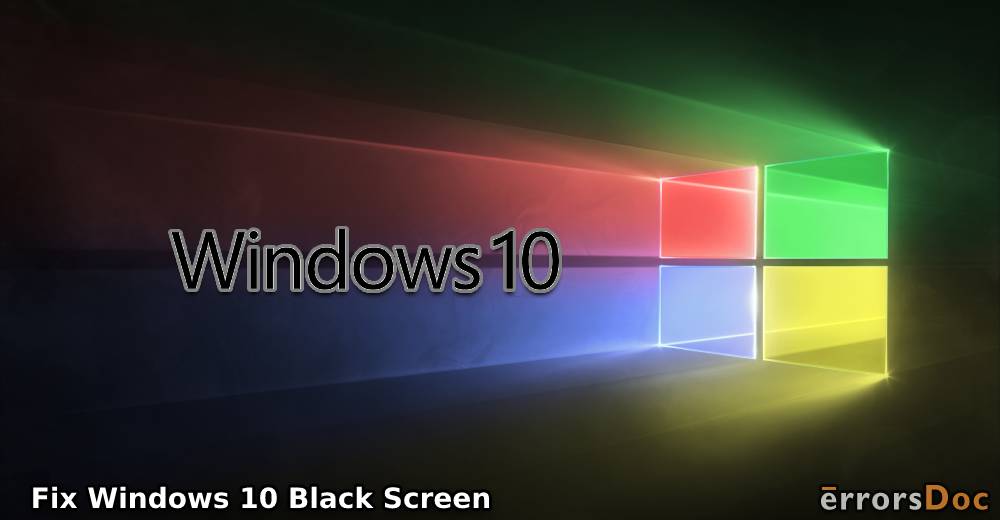Of late, many Windows 10 users have reported black screen issue that occurs when they try to ‘wake up’ or resume their computer from sleep/ hibernation mode. The issue makes their machine inoperable and the only resort left is to force shut down their computer by pressing the power button and then turning it on again.
Well, to your respite, the good news is that this issue is power-related and has nothing to do with the screen. In fact, problem occurs due to a new feature that was introduced in latest versions of Windows, namely Windows 8, Windows 8.1, and Windows 10. Known as Hybrid Shutdown, it puts your computer in sleep mode for a certain period of time and minimizes the shutdown and booting time. But due to some bugs, your computer is not able to complete the shutdown process and results in black screen.
In this article, we’ll show you some simple ways to completely resolve the problem. In case you need expert help or are not able to resolve the problem on your own, call us. Dial +1-866-496-0452 toll free to get in touch with our expert technicians who can help you quickly fix the issue for complete peace of mind.
Resolution to the problem
Solution 1: Disable Fast Startup, Hibernation, and Hybrid Mode
Fast startup and hybrid sleep mode have been introduced by Windows to reduce the boot time and allow your computer to quickly start from sleep. However, they lead to black screen errors too, and disabling their functionality can help fix the problem. So, try disabling each of these modules one by one to see if you are able to fix the issue.
To disable fast startup:
- Press Windows + R to open the Run command box.
- Type “Control Panel” in the box and press Enter.
- Select Large icons from the Control Panel and click on Power Options.
- Now click on “Choose what the power buttons do” and then click “Change Settings that are currently unavailable” option.
- Scroll down to the bottom of the page and unchecked the box which says “Turn on fast startup”.
- Click Save to apply the changes and Exit.
Now, restart your computer and try entering the sleep mode to check if the issue has been resolved. If the problem still persists, try disabling the hibernation mode.
To disable the hibernation mode:
- Press Windows + S and type “command prompt” in the dialogue box.
- Right click on the application and select “Run as administrator”.
- Now execute the following command: “powercfg /h off”.
- Restart your computer and check if the black screen error has been resolved.
However, if this solution also doesn’t work, disabling your computer’s sleep functionality could help permanently resolve the issue. For this,
- Go to the power options and click on “Change plan settings”.
- Change “Put the computer to sleep” to ‘Never’.
- Click Save to apply the changes and exit.
- Restart your computer.
From now on, your computer will not go into the sleep mode automatically. However, you can still access the sleep option from the shutdown options.
Solution 2: Disabling App Readiness
Another way to fix black screen after sleep issue in Windows 10 is by disabling app readiness. Though it is important for performing successful Windows update, it might conflict with Windows registry keys and force users to experience black screen issue.
To fix the problem:
- Launch the Run application by pressing Windows + R.
- Type “services.msc” in the dialogue box and press Enter.
- Right click on “App Readiness”. In the service tab and select Properties.
- Press the Stop button to stop the service and then select “manual” as the startup type instead of automatic.
- Press Ok to save the changes and exit.
- Restart your computer and check if the black screen issue still occurs.
Solution 3: Changing the Registry keys
If disabling the App Readiness service doesn’t help fix the problem, deleting the problem causing registry keys can. However, this is a complicated process and should only be performed under expert supervision. Changing the registry settings of your computer can lead to permanent, irreparable changes in your computer. So in case you are not a computer expert, you can seek the assistance of our expert technicians. Call +1-866-496-0452 to get in touch with our tech support specialists who can help you backup your registry and then carefully delete your registry keys to avoid any problems later on.
To change your registry settings:
- Press Windows + R.
- Type “regedit” in the dialogue box and press Enter.
- Once in the registry editor, navigate to the following path:
HKEY_LOCAL_MACHINE\SOFTWARE\Microsoft\Windows\CurrentVersion\Appx\AppxAllUserStore\Applications
- Now select the sub-keys with the following keywords:
- Microsoft.NET.Native.Framework.
- Microsoft.NET.Native.Runtime.
- Microsoft.VCLibs.
- Right click on each of them and click Delete.
Restart your computer to check if the black screen issue has been resolved. If not, restore the registry values and confirm if the problem has been fixed.
Still not able to fix the issue?
Dial +1-866-496-0452 and get in touch with our Windows 10 support specialists. They’ll quickly scan your computer to identify the root cause behind the problem and will help you fix it in the minimum time possible that too remotely, at the convenience of your place. We assure guaranteed first-call resolution of all issues for uninterrupted work and productivity.
